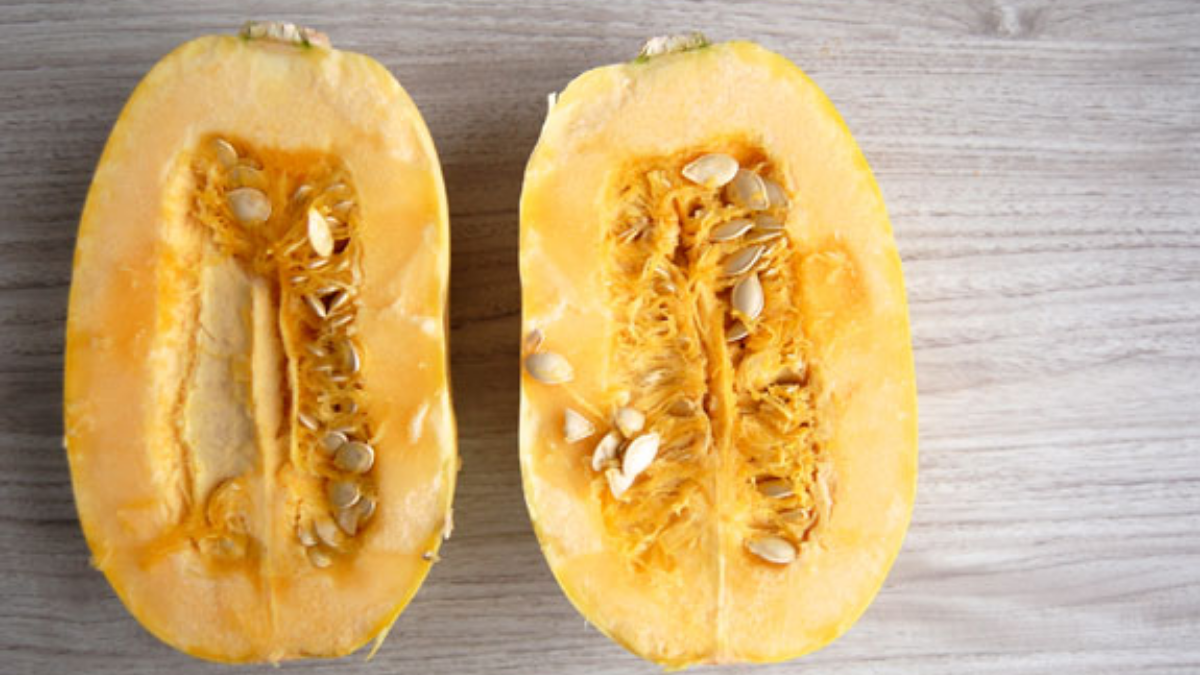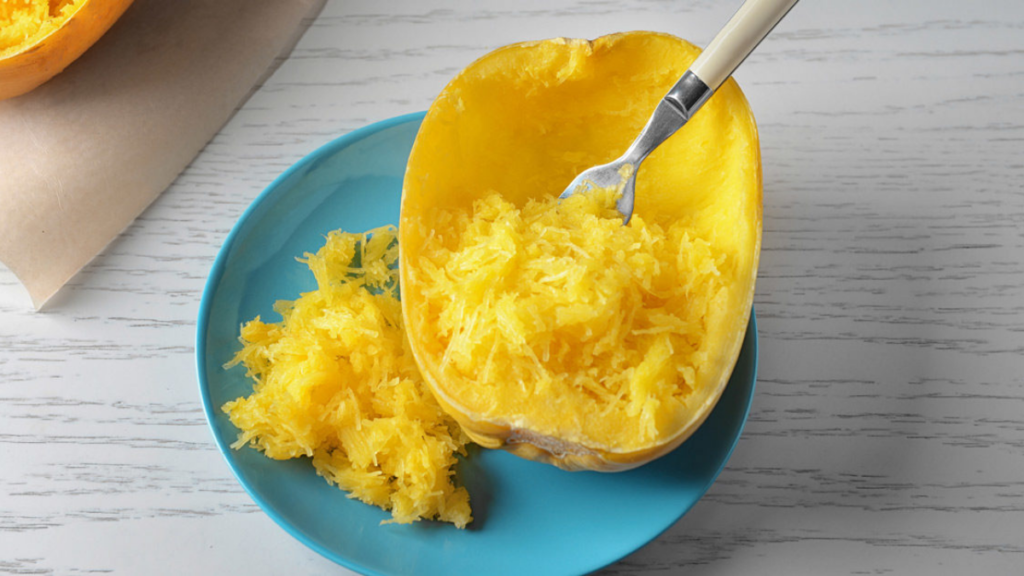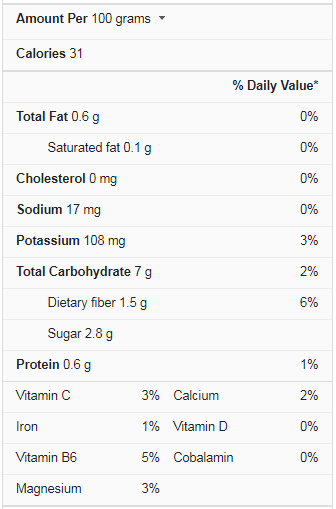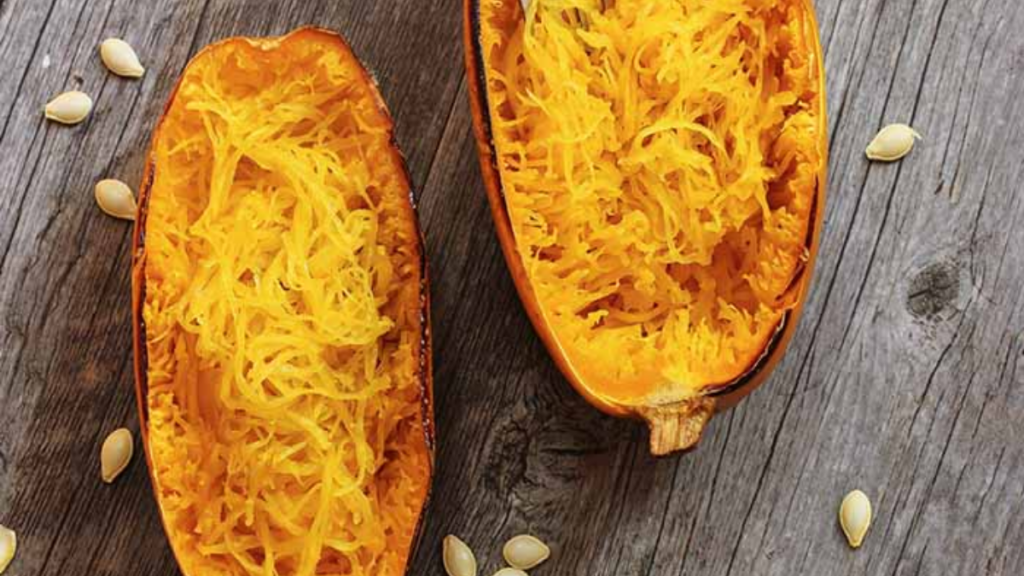Spaghetti squash is a colorful winter vegetable with a mild nutty flavor and a high nutritional value. Spaghetti squash, which is related to pumpkin, zucchini, and other squashes, comes in various sizes, shapes, and colors, ranging from off-white to dark orange. It’s associated with some health benefits and is low in calories and high in nutrients. Spaghetti squash is a nutrient-dense food, which means it is low in calories but high in vitamins and minerals. Spaghetti squash, in particular, is high in pantothenic acid. Fiber, vitamin C, manganese, vitamin B6, and niacin are good sources. This article will show you spaghetti squash nutrition facts.
One cup of boiled or baked spaghetti squash contains 31 calories, 0.6 grams of protein, 7 grams of carbohydrates, and 0.6 grams of fat. Vitamin A, vitamin C, B vitamins, and manganese are abundant in spaghetti squash. The USDA has provided the following nutritional information.
Spaghetti Squash Nutrition Facts
What is Spaghetti Squash?
Pepo cultivars are known as spaghetti squash or vegetable spaghetti. They come in various shapes, sizes, and colors, including ivory, yellow, and orange, the latter containing the most carotene. Many large seeds are found in the center. The flesh is solid and similar to other raw squash when eaten raw.
When the fruit is cooked, the meat separates from the flesh in ribbons or strands that resemble spaghetti and can be used to substitute it. Baking, boiling, steaming, or microwaving spaghetti squash are all options for cooking it.
The flesh of this fruit can be prepared so that its “strands” resemble traditional spaghetti noodles and are as long as they are. It can be served with or without sauce as a pasta substitute, and its seeds, like pumpkin seeds, can be roasted.
What are the Health Benefits of Spaghetti Squash?
Here are some health benefits of spaghetti squash:
Supports Strong Bones
Manganese, for example, is found in spaghetti squash and contributes to bone health. Manganese supports bone metabolism and may help prevent osteoporosis, although research on the mineral’s role in osteoporosis prevention has yielded mixed results. The vitamins and minerals in spaghetti squash complement each other. It is usually recommended to obtain nutrients through food rather than dietary supplements.
Protects Eyes
Spaghetti squash contains vitamins A and E, which help to protect the eyes from oxidative damage that causes age-related macular degeneration. Getting these nutrients from food rather than supplements offers health benefits and reduces the risk of supplement toxicity.
May Help Prevent Cancer
Cucurbitacins, found in spaghetti squash and other related plants, have been shown to kill cancer cells in preliminary in vitro studies, indicating that more research is needed. Vitamin C and vitamin A are also known for their antioxidant properties.
May Support Bladder Health
According to some studies, a seed extract derived from spaghetti squash could help manage urinary stress incontinence, which occurs when the pelvic muscles that support the bladder and the sphincter muscle that controls urinary flow become weak. However, studies on this benefit used a supplement made from spaghetti squash and other plant sources.
Components derived from spaghetti squash may also help manage overactive bladder syndrome, which causes an involuntary loss of urine after a frequent urge to urinate. However, studies have only looked at supplements made from compounds found in spaghetti squash and other plants.
May Enhance Memory
B vitamins, which can be found in spaghetti squash and other foods, help the brain communicate memories and messages from one part of the brain to another. Uncontrolled diabetes is also linked to an increased risk of Alzheimer’s disease. Some health professionals have dubbed Alzheimer’s disease “type 3 diabetes” due to high blood sugar on the disease’s development. In animal studies, several varieties of winter squash have been shown to prevent blood sugar from rising after eating.
How does Spaghetti Squash Affect Digestion?
Fiber makes your stool bulkier by moving slowly through your digestive system. Constipation is relieved, and regularity is promoted. Spaghetti squash has a high fiber content. A 1-cup (155-gram) serving contains 2.2 grams of fiber, accounting for 8% of your daily fiber requirements. Increasing your fiber intake can help with a variety of digestive issues.
Research suggests that eating a high-fiber diet can help with diverticulitis and hemorrhoids. Including 1–2 servings of spaghetti squash in your diet and a variety of other fiber-rich foods can help you maintain regularity and a healthy digestive system.
Are There any Reasons to Avoid Spaghetti Squash?
Though spaghetti squash is highly nutritious, there are some things to keep in mind before adding it to your diet.
Be Aware of Potential Allergies
Spaghetti squash may cause allergic reactions in some people. It’s not a well-known allergy, but it has been linked to reactions to foods like pumpkin. Hives, itching, swelling, and digestive problems are some of the symptoms of food allergies. Consuming a food to which you are allergic can cause anaphylactic shock, a life-threatening condition.
If you experience unexplained symptoms after eating spaghetti squash, stop eating it immediately and see a doctor. If you have symptoms of anaphylaxis, such as swelling of your throat or tongue or trouble breathing, seek emergency medical help right away.
Ensure You’re Getting Enough Calories
Spaghetti squash has a low-calorie count. While this can be beneficial for those looking to lose weight, it’s essential to avoid severely restricting calories, as this can lower your body’s metabolic rate. A low-calorie diet can also cause gallstones. Choose healthy toppings and pair them with other nutritious foods like veggies, herbs, spices, heart-healthy fats, and lean proteins to maximize the potential health benefits of spaghetti squash.
Storage and Food Safety
Spaghetti squash is readily available all year in the markets. Look for produce that is well-developed. To ensure there is no give, press hard with the thumb. Another way to tell if it’s mature is to listen for woody notes. The stems of mature fruits are solid, dry, and cork-like. Those with soft spots, cuts, or bruising should be avoided. Also, stay away from those with thin, green stems.
Farmers typically cure fresh produce before selling it to the public. Curing extends the life of the fruit, allowing it to be transported over longer distances and fetching a higher price. Keep in a cool, well-ventilated area at home. When stored in an excellent, dry environment, cured squash can last up to 3 months. On the other hand, cut sections should be used right away or kept in the refrigerator for 2-3 days, wrapped in a plastic sheet.
How to Select and Prepare?
Spaghetti squash is a popular winter squash variety. It’s large and yellow, and it’s widely available in supermarkets. Choose a firm squash with a thick rind that weighs more than it appears. Squash with soft spots or visible mold should be avoided. Spaghetti squash is simple to prepare once you get it home, and there are several options. You can either cut the squash in half or cook it whole. The main benefit of cutting the squash before cooking is that it cooks more quickly.
However, cutting requires muscle and a sharp knife or cleaver, which can be dangerous. Scraping out the seeds and pulp is also more difficult when the squash is raw. If you want to cut it first, score it in a few places and microwave it for 5 minutes. It will be just soft enough to slice through the rind with ease. Cooking the whole squash is simple, and the pulp and seeds can be easily removed afterward. This method takes longer to cook, and you must be careful when removing the pulp and seeds because of the hot steam.
Conclusion
Spaghetti squash is a vitamin, mineral, and antioxidant-rich winter vegetable, and it may help with weight loss and digestive health due to its low-calorie and high-fiber content. Combine roasted spaghetti squash with vegetables, protein, whole grains, and healthy fats for a low-carb alternative to pasta.
Spaghetti squash has a mild flavor and a tender, chewy texture, making it a popular substitute for pasta or grains. It can be microwaved, roasted, or steamed. It contains vitamins and minerals, including B-complex vitamins, dietary fi, and manganese, and is low in calories and carbs.



